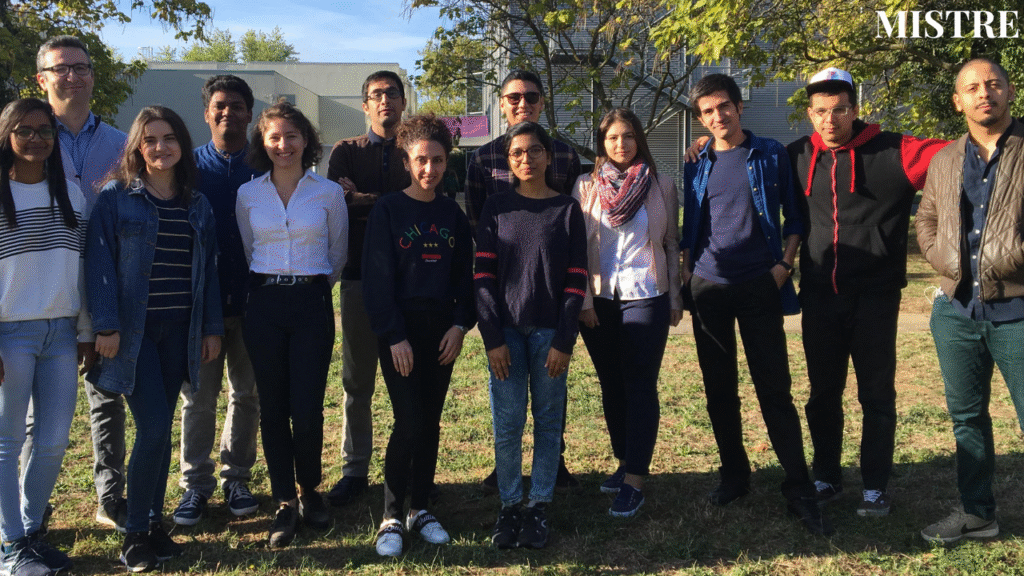The name “Mistre” might not ring bells in mainstream conversations, yet it echoes with a haunting familiarity among lovers of mythology, literature, and obscure symbolism. Elusive in definition and fluid in form, Mistre embodies a concept that transcends rigid categories—whether as a metaphor, mythic figure, or abstract archetype. Its mysterious nature has intrigued scholars, artists, and seekers for generations, creating a patchwork of interpretations that defy simple explanation.
In the modern age of information, where clarity often takes precedence, the enduring allure of something as ambiguous as Mistre serves as a testament to our collective fascination with the unknown. It is not a coincidence that across cultures and disciplines, similar ideas resurface—each carrying a trace of what we now call Mistre. Whether as a whisper in ancient texts or an icon on a digital canvas, Mistre continues to adapt and transform.
This article dives deep into the multifaceted world of Mistre: its origins, presence in literature and folklore, modern interpretations, and the rich symbolism that surrounds it. Through this exploration, we aim not only to define Mistre but to understand why it continues to captivate the human imagination across centuries and civilizations. Prepare to journey through shadows and symbols as we unveil the layers behind the enigma that is Mistre.
The Origins of Mistre Etymology and Historical Context
The word Mistre lacks a clearly documented origin, which only deepens its mystique. Linguists have speculated on its etymology, tracing possible roots to Old French, Latin, or even ancient Germanic languages. Some scholars propose that it derives from the Old French word “mestre,” meaning master or teacher—suggesting an authoritative, guiding presence. Others argue for a connection with the Latin “mysterium,” tying Mistre to mystery, initiation, and the sacred unknown. These linguistic breadcrumbs hint at a figure or concept that is both revered and cloaked in secrecy.
Historically, Mistre has been invoked in texts that range from early medieval allegories to Renaissance occult literature. In these references, Mistre is often presented not as a person but as a force—an entity that operates on the edges of perception and logic. This has led to interpretations that position Mistre as a personification of fate, hidden wisdom, or cosmic balance. In a few obscure manuscripts found in Eastern Europe and North Africa, the term appears in descriptions of vision quests, alchemical processes, and ritualistic storytelling, often as a cryptic guide or threshold guardian.
The lack of a definitive historical anchor allows Mistre to become a cultural chameleon. As it traverses timelines and geographies, it morphs into whatever is needed: protector, disruptor, oracle, or shadow. Unlike mythic figures with linear stories, Mistre resists confinement. Its very power lies in its refusal to be fully known—an eternal whisper in the background of human thought.
Mistre in Literature Art and Folklore
Literature has long been a fertile ground for figures like Mistre to flourish. In both classical and modern texts, the archetype of the mysterious guide or veiled authority often embodies traits reminiscent of Mistre. Think of characters like Merlin in Arthurian legend, the wandering stranger in folk tales, or even the unnamed narrator in Gothic fiction—each serves as a manifestation of this elusive presence. Although the name “Mistre” may not be explicitly used, the qualities attributed to such figures resonate deeply with the essence of Mistre.
Visual arts have also embraced this shadowy persona. From medieval illuminations to surrealist paintings, artists have depicted veiled figures, twilight landscapes, and doorways leading into unknown realms—symbolic of Mistre’s threshold nature. In contemporary art, digital illustrations and conceptual installations often play with themes of ambiguity, identity, and metaphysical journeys, subtly channeling the Mistre archetype. Its presence is felt more than seen, a silhouette in the periphery rather than a clearly defined form.
Folklore is perhaps where Mistre’s influence is most tangible. In Romanian, Slavic, and Mediterranean folk stories, there are recurring motifs of a “Mistre” figure—sometimes a wise woman, other times a shapeshifting animal—who tests, aids, or transforms the protagonist. These stories emphasize transformation, initiation, and the passage between worlds. Mistre is rarely the hero but always a necessary presence, guiding the journey without demanding recognition.
Whether whispered in ancient tales or hinted at in contemporary creations, Mistre’s cultural legacy is profound. It thrives not by being named, but by being known in the silence between words.
Modern Interpretations and Cultural Significance

In today’s world, the idea of Mistre has taken on new forms. With the rise of digital culture, independent storytelling, and metaphysical exploration, Mistre has emerged as a symbol for the unknown parts of ourselves and our universe. In certain subcultures—such as alternative spirituality, speculative fiction, and cyber-mysticism—Mistre is reimagined as an entity that exists within the digital ether, guiding users through the chaos of modern life with cryptic wisdom and uncanny synchronicity.
Brands and artistic collectives have also adopted the name “Mistre” as a representation of avant-garde values. In fashion, for instance, Mistre is used to market clothing that blurs gender lines and embraces fluidity. In music, experimental artists have released ambient or darkwave albums under the moniker, using abstract soundscapes to evoke Mistre’s elusive presence. These expressions speak to a growing desire to break away from rigid norms and engage with deeper, less definable experiences.
Philosophically, Mistre has found footing in Jungian psychology and postmodern theory. As an archetype, Mistre can be seen as the “Shadow” or “Wise Old Self”—a carrier of hidden truths waiting to be uncovered. Academics have noted that in an era of hyper-connectivity and disinformation, figures like Mistre provide a grounding metaphor for discernment and inner exploration. Instead of clear-cut answers, Mistre offers the journey inward—where the answers are never final, only evolving.
Ultimately, Mistre’s cultural relevance today lies in its ambiguity. In a world that demands labels, Mistre reminds us that some truths are best approached sideways, in silence and shadow.
The Symbolism of Mistre Metaphor Myth and Meaning
At its core, Mistre is more than a name or concept—it is a symbol. A living metaphor for the unknown, Mistre invites introspection and challenges assumptions. It stands at the threshold between light and dark, known and unknown, conscious and subconscious. This liminal quality makes Mistre profoundly powerful in symbolic discourse, akin to figures like the Hermit in tarot, the Oracle in mythology, or the Dreamwalker in indigenous traditions.
Mistre often symbolizes transformation. It does not act directly but sets the stage for the seeker’s journey. In this sense, Mistre plays a catalytic role, forcing characters (and readers) to confront hidden fears, deep desires, and untapped potential. The interaction with Mistre rarely yields comfort—instead, it prompts change. This aligns closely with mythic hero’s journeys, where the guide is crucial but never central to the story’s resolution.
Another layer of Mistre’s symbolism is its relation to duality. It often represents the integration of opposites: logic and intuition, chaos and order, shadow and light. This is why Mistre appears in dreams, rituals, and altered states of consciousness. It is not meant to be understood in a linear sense but experienced holistically.
In modern spiritual and psychological frameworks, Mistre’s symbolic presence is increasingly recognized as essential. Whether as a muse, mentor, or mirror, Mistre reminds us that meaning is not always found in clarity—but sometimes in confusion, complexity, and contradiction.
Conclusion
Mistre may not be easily defined, but it is deeply felt. Across languages, landscapes, and legends, this enigmatic presence endures—shaping art, inspiring introspection, and guiding countless seekers through their personal and collective mythologies. Its power lies not in identity but in influence, subtly steering narratives and nudging us toward deeper awareness.
In an age hungry for clarity, Mistre offers something rare: the right to not fully understand. And in that ambiguity, we find room for growth, imagination, and mystery—a precious gift in any era.
FAQs
What does the word “Mistre” mean?
Mistre is a symbolic, often abstract term associated with mystery, transformation, and hidden knowledge. It has varied meanings depending on the cultural or artistic context.
Is Mistre a real historical figure or a fictional creation?
Mistre is not tied to a single historical figure. It is a conceptual or symbolic entity found in literature, folklore, and art.
How has Mistre been represented in art and literature?
Mistre appears as a mysterious guide, veiled presence, or transformative force, often influencing protagonists in subtle but pivotal ways.
What cultures or regions have references to Mistre?
Elements of Mistre can be found in European, Mediterranean, and Middle Eastern folklore, though it appears under different names and forms.
Is Mistre a symbol or archetype in psychology or mythology?
Yes. Mistre is often compared to the Jungian “Shadow” or mythological guides like Oracles or Tricksters, representing inner transformation.
You May Also Read: https://techbusinessus.com/figurativement/





